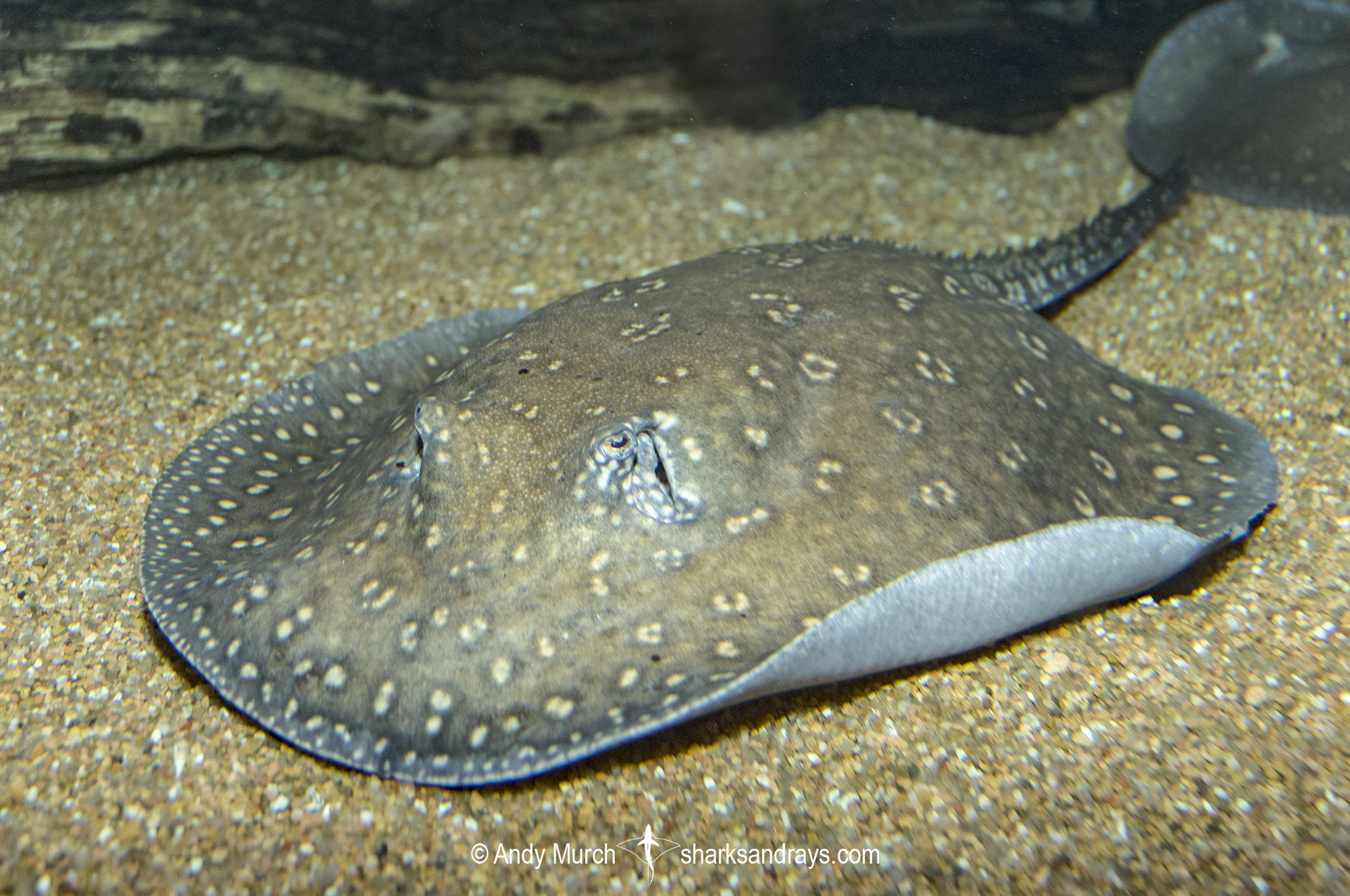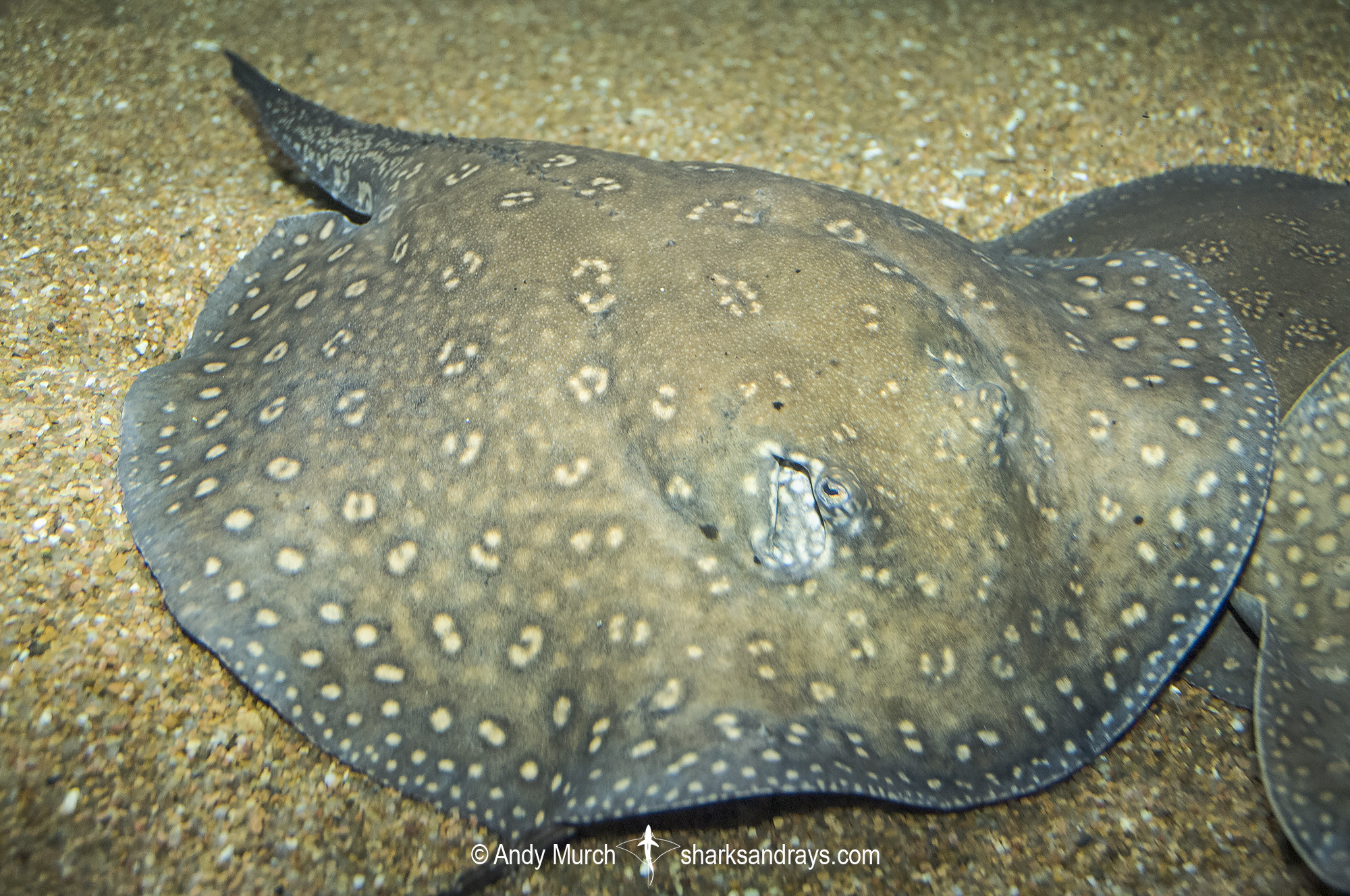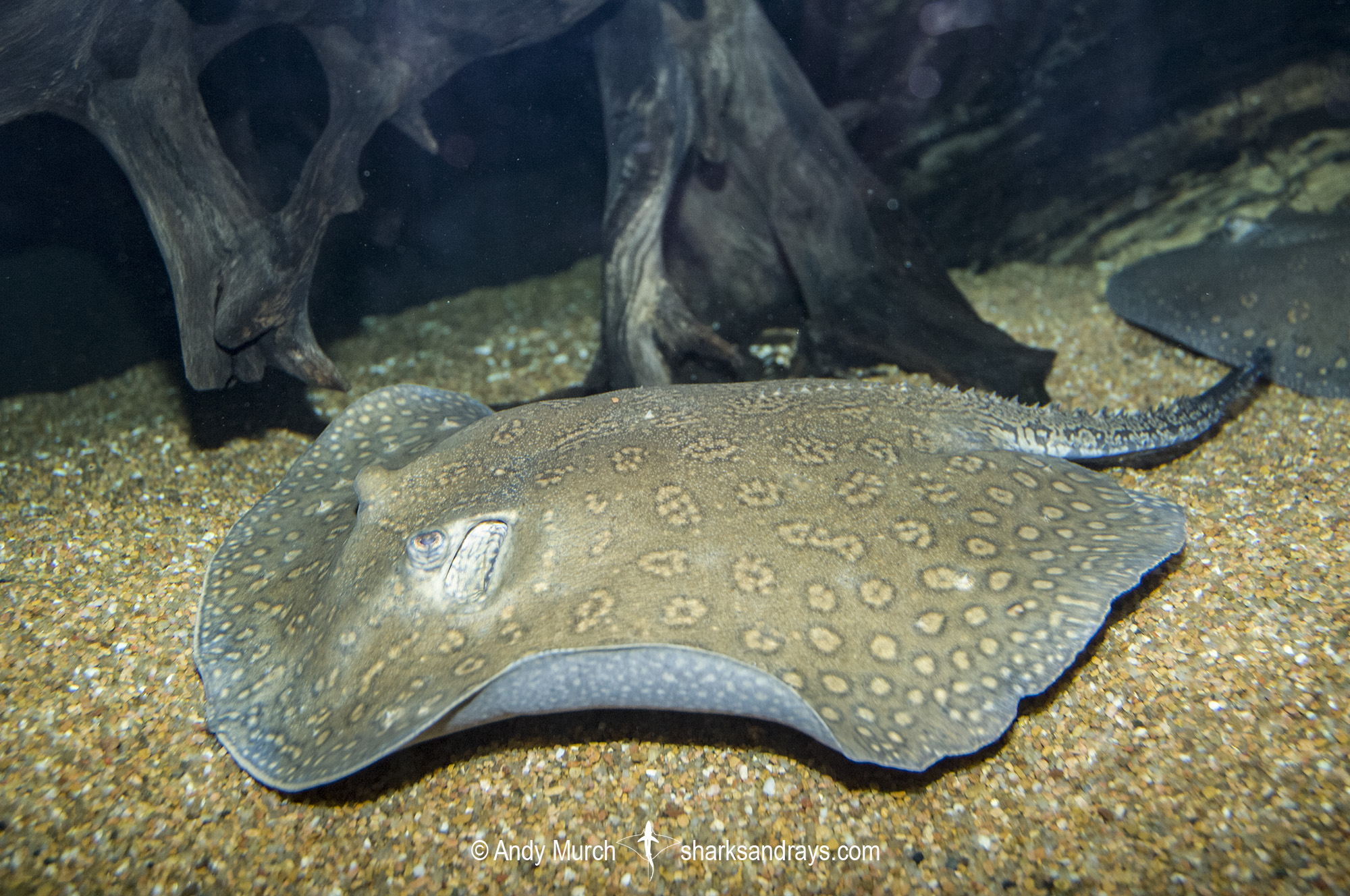Common name
Parnaíba River Stingray.
Binomial
Potamotrygon signata.
Synonyms
Potamotrygon signatus.
Identification
A medium-sized freshwater stingray with an oval disc that is longer than wide. Small lobe visible on tip of snout. Head relatively broad. Eyes small. Spiracle length approximately 2x eye length. Nostrils thin. Nasal curtain broad and skirt-shaped. Mouth large with 5 oral papillae.
Disc densely covered in small, prickly denticles; denticles smaller towards disc margin. Pelvic fin posterior margins slightly posterior to disc. Tail broad based, shorter than disc width, with small dorsal/ventral finfolds. 1-3 irregular rows of thorns on midline from mid-disc to caudal sting. Thorns on tail larger than those on disc. Caudal sting origin positioned slightly posterior of mid tail.
Colour
Dorsum greenish-grey to greenish-brown with numerous irregular small yellow spots that sometimes form rosettes in larger animals. Ventrum mostly white with grey spots towards margin. Tail ventrally with yellow mottling.
Size
Maximum disc width 45cm. Disc width at birth unknown.

Conservation Status
DATA DEFICIENT
Artisanal and commercial fisheries target all freshwater stingrays that live in this region. Plus, juveniles are collected for the ornamental fish trade.
Combined with habitat degradation caused by the damming of rivers, mining, deforestation, and farming run off, there have probably been significant declines in all Potamotrygonid species.

Habitat
Tropical freshwater river systems.
Distribution
South America. Confined to the Parnaíba River watershed in northern Brazil.
Reproduction
Presumably viviparous with trophodermic nutrition. Litter size unknown.
Diet
Diet consists mainly of insects, but also consumes molluscs, crustaceans, and small fishes.
Behavior
Poorly known. Probably moves into seasonally flooded areas during periods of high water.
Reaction to divers
Unknown but probably difficult to approach.
Diving logistics
There are no records of divers encountering Parnaíba freshwater stingrays in the wild. This isn’t particularly surprising as the Parnaíba River is extremely turbid. However, there may be clearer water in some of its tributaries.
What’s new
View our full list of updates
Similar species
The Parnaíba river stingray resembles many other small-spotted freshwater stingrays but it can be identified by it’s unique greenish-grey dorsal coloration.




